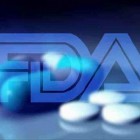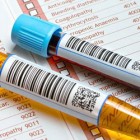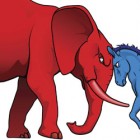It is estimated that Americans purchase more than $1 billion in medications a year from Canadian pharmacies. And while it seems like 'everybody's doing it,' importing these drugs still remains illegal.
Latest Blog Posts
 October 18, 2012
October 18, 2012
There are a number of reasons why many of the same brand name prescription drugs sold in Canada are often significantly less expensive than those found in the United States. The reasons range from price-capping to encouraging price competition to standard of living to advertising and to American litigiousness.
 October 13, 2012
October 13, 2012
Over the course of the time that the FDA has been approving medications, numerous recalls and market withdrawals have occurred, when data revealed that approved drugs were not truly safe to be on the market.
 October 12, 2012
October 12, 2012
The fact is, in recent years, the terms 'drug' and 'medicine' have almost become interchangeable in usage.
 October 9, 2012
October 9, 2012
Want to know for sure the medication that your doctor has prescribed for you to take during your pregnancy poses no risk to your unborn child?
 October 2, 2012
October 2, 2012
Numerous apps make medical claims that can't be backed up by research. Claims like these violate FDA regulations. Other mobile health app developers avoid FDA rules by piling on disclaimers.
 September 26, 2012
September 26, 2012
Pharmacists are no different in wanting their voices to be represented, and thus it comes as no surprise that the blogosphere is replete with posts by those with pharmacy degrees, composed with the same motivations that drive so many bloggers.
 September 20, 2012
September 20, 2012
Concerns about growing costs to companies and lost worker hours explain how the use of drug detection methods in urine and hair have grown exponentially.
 September 16, 2012
September 16, 2012
From 1998-2012, Big Phamra has led the political lobbying charge in the US by spending over $2 billion over the period.
 September 14, 2012
September 14, 2012
Orphan Drugs are created to treat or prevent rare illnesses and diseases. These drugs may also include those which are produced where manufacturers cannot expect to make profits.
 September 13, 2012
September 13, 2012
This article examines the efficacy and safety of Tamiflu as a flu remedy using research and personal anecdotes to suggest that Tamiflu is not worth the risk.
 September 9, 2012
September 9, 2012
Prescriptions for atypical antipsychotics would nearly triple from 1995 to 2008 in the US, with more than 16 million prescriptions for them written in the latter year.


